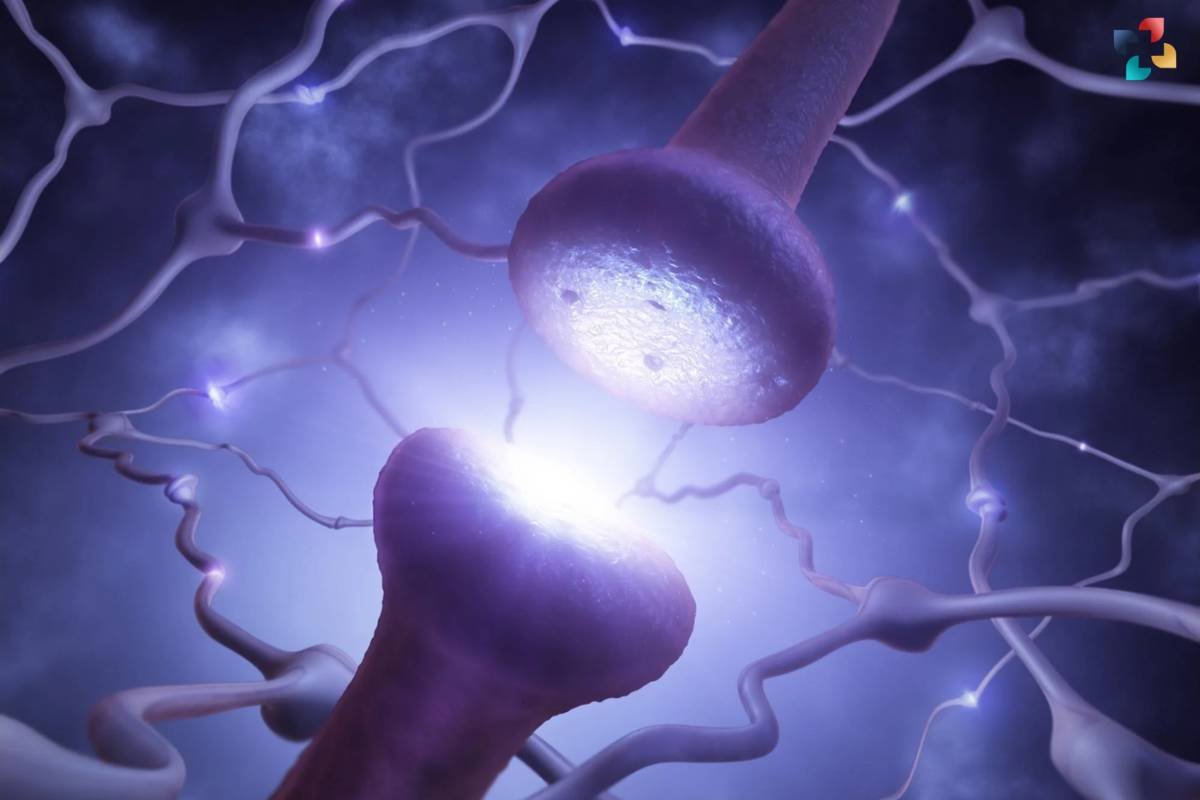Source-SciTechDaily
Synapses can be found anywhere there are nerve cells, whether in the muscles or the brain. The process of excitation transmission, which is basically neuronal communication, depends critically on synapses, or the connections between neurons. There is a sender and a recipient, just like in any communication process: Axons, which are structures within nerve cells, are responsible for producing and sending electrical signals.
Axonal nerve terminals, or the pre-synapse, and post-synaptic neurons come into contact at synapses. The electrical impulse is transformed into chemical messengers at these synapses, which are then recognised and received by the post-synapses of the nearby neurons. Known as synaptic vesicles, these unique membrane sacs release the messengers.
Syncs can store information in addition to sending it. Although synapses’ structure and functions are reasonably well established, their formation is a subject of much less knowledge.
This riddle has now been significantly clarified by a team from the Leibniz-Forschungsinstitut für Molekulare Pharmakologie (FMP) in Berlin. This outstanding discovery was also made possible by scientists from the Universities of Leipzig, Chicago, Sheffield, and Charité-Universitätsmedizin, as well as the Max Delbrück Centre for Molecular Medicine (MDC).
Synaptic vesicle formation is revealed by fluorescent protein
The scientists created neurons from the altered stem cells by using CRISPR gene scissors to introduce a fluorescent protein into human stem cells, allowing them to monitor the development of pre-synapses from the very beginning. The fluorescent marker allowed the researchers to directly view, under a microscope, the development of nascent synaptic vesicles in living, growing human nerve cells.
Membrane vesicles called synaptic vesicles are stored at each synapse and contain messengers that help translate electrical information into chemical messages. These vesicles make up the core of the pre-synapse, together with scaffolding proteins that inform synaptic vesicles of the location of the synapse and calcium channels that chemically convert the electrical signal.
Because each of the three components has a unique set of genes, they are all composed of distinct protein molecules. Because of this, it was once believed that they also travel separate paths before coming together at a single location to form a functional synapse.
Every element started off together.
The researchers’ findings, however, contradict this theory. The head of the study group, Professor Dr. Volker Haucke, said of the unexpected discovery, “The synaptic vesicle proteins and the proteins of the so-called ‘active zone’ and probably also the adhesion proteins that hold synapses together, share the same bus.” It generated a lot of controversy. However, our findings on human neurons in culture appear to be very obvious.
However, how precisely do the proteins get to the location where synapses form? One thing the researchers were able to demonstrate in their work is that axonal transport is powered by a motor protein mechanism. Their research indicates that “KIF1A,” a kinesin, is the primary motor. The most well-known aspect of this motor protein is its link to neurological conditions affecting the brain and peripheral nerve system. Volker Haucke says, “We believe that mutations in KIF1A impair axonal transport of pre-synaptic proteins, resulting in neurological symptoms such as movement disorders, ataxia, or mental disability.” In addition, the scientist teaches molecular pharmacology at Freie Universität Berlin.
Furthermore, the cell-biological identity of the axonal carriers was ascertained by the researchers. This brought about yet another surprise: the axonal transport vesicles share markers with the endolysosomal system, which is generally responsible for the breakdown of faulty proteins in non-neuronal cells, but lack Golgi markers, despite the fact that the majority of secretory vesicles are produced by the so-called Golgi apparatus. By using a unique technique that combined light and high-resolution electron microscopy, the researchers were able to observe the axonal transport vesicles ultrastructurally and determine their dimensions.
Finding transport organelles exclusive to neurons
Lead author and FMP postdoctoral scholar Sila Rizalar said, “Our work suggests that neurons have invented a new kind of organelle, a transport organelle that may be unique to neurons.” The discovery was published in Science. “This was not as well-known as the shared transport route.”
New discoveries in fundamental research may eventually find their way into therapeutic settings. After all, in order to intervene therapeutically when the contact sites between neurons break down, whether as a result of illness, trauma, or ageing, it is critical to comprehend the mechanism of axonal transport and the major proteins involved. Volker Haucke states, “Ideally, axonal transport can be improved or restored to support neuronal regeneration or combat ageing.”
Many issues remain unsolved, even though researchers have now uncovered a crucial mechanism of synapse creation. These include how the recently discovered transport organelles are generated, what makes them, and how they convey their cargo—synapse molecules—to their intended location. It also begs the question of whether memories that last a lifetime are potentially stored by the same axonal transport mechanism that forms synapses. Volker Haucke and his staff are eager to provide answers to these queries right now. The possibilities are fascinating.
Reference: “Phosphatidylinositol 3,5-bisphosphate facilitates axonal vesicle transport and presynapse assembly” by Filiz Sila Rizalar, Max T. Lucht, Astrid Petzoldt, Shuhan Kong, Jiachen Sun, James H. Vines, Narasimha Swamy Telugu, Sebastian Diecke, Thomas Kaas, Torsten Bullmann, Christopher Schmied, Delia Löwe, Jason S. King, Wonhwa Cho, Stefan Hallermann, Dmytro Puchkov, Stephan J. Sigrist and Volker Haucke, 12 October 2023, Science.






